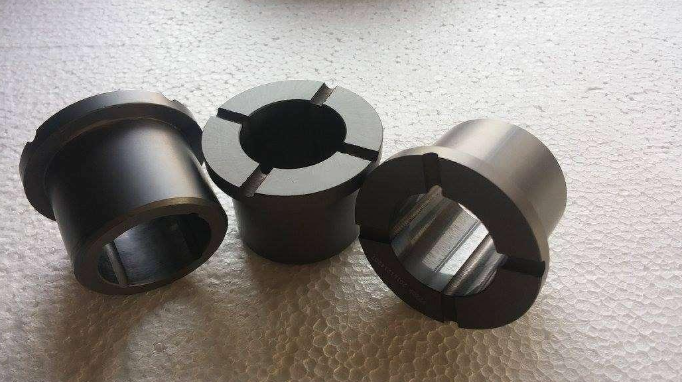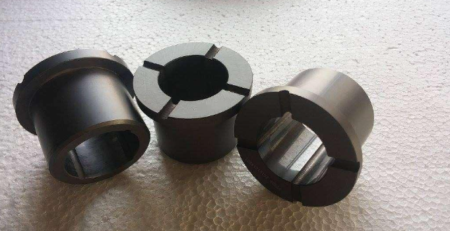The Six Advantages of Silicon Carbide and the Application of Silicon Carbide Ceramics
Silicon carbide is no longer just used as an abrasive, but more as a new type of material and is widely used in high-tech products. For example, ceramics made of silicon carbide material are widely used in high-end products. So what are the six advantages of silicon carbide and the applications of silicon carbide ceramics?

Six major advantages of silicon carbide materials:
1. Low density
The density of silicon carbide material is lower than that of metal, making the equipment lighter.
2. Corrosion resistance
Silicon carbide materials have high melting point, chemical inertia and thermal shock resistance. Silicon carbide can be used for abrasives, ceramic firing kilns and slabs used in silicon carbide, as well as for smelting and smelting industrial vertical cylindrical distillation furnaces, bricks, aluminum electrolytic cell lining, crucibles, small furnace charge and other silicon carbide ceramic products.
3. High temperature resistance, low coefficient of thermal expansion
Silicon carbide materials are manufactured at high temperatures. In certain high-temperature environments, materials are required to have certain processing strength and precision, and silicon carbide ceramics can achieve these two points. The high temperature of silicon carbide is about 800 ℃, while the temperature of steel is only 250 ℃. Rough calculation shows that the average coefficient of thermal expansion of silicon carbide is 4.4 within the range of 25 to 1400 ℃ × 10-6/℃。 The measurement results of the coefficient of thermal expansion of silicon carbide show that this amount is far less than that of other abrasives and high-temperature materials.
4. High thermal conductivity
Silicon carbide materials have high thermal conductivity, which is another important characteristic of the physical properties of silicon carbide. The thermal conductivity of silicon carbide is much greater than that of other refractory materials and abrasives, approximately four times that of corundum. Silicon carbide has low coefficient of thermal expansion and high thermal conductivity, which makes the workpiece less subject to thermal stress during heating and cooling, which is the reason why SiC parts are particularly resistant to thermal shock.
5. High mechanical strength and good rigidity
The high mechanical strength of silicon carbide material prevents material deformation. The mechanical strength of silicon carbide is higher than that of corundum.
6. High hardness and wear resistance
The hardness of silicon carbide materials is very high, with Mohs notch hardness ranging from 9.2 to 9.6, second only to diamond and boron carbide. Compared with metal steel materials, it has high hardness, low friction coefficient, relatively low friction, small surface roughness, and good wear resistance in a non lubricated state. In addition, it has strong resistance to external substances and improves surface tolerance.
Application of Special Silicon Carbide Ceramics
1. Special ceramics produced from silicon carbide materials
Silicon carbide material is a material with high hardness and low cost, which can produce silicon carbide products, such as silicon carbide seals, silicon carbide shaft sleeves, silicon carbide bulletproof plates, silicon carbide shaped parts, etc. It can be applied to mechanical seals and various pumps.
2. Special ceramics produced from zirconia materials
Zirconia ceramics have become a kind of electrolyte materials with many researches and extensive applications because of their high ionic conductivity, good chemical stability and structural stability. Improving the preparation process of zirconia based electrolyte thin films, reducing the operating temperature and preparation cost of such materials, and striving to achieve industrialization is also an important direction for future research.
Best way to cut silicon carbide:
One of the best ways to cut silicon carbide is by using a diamond cutting wire loop.
The diamond cutting wire loop consists of a metal wire covered with tiny diamond particles, known for their exceptional hardness and wear resistance.
It can be used on high-speed cutting machines, where the diamond loop rotates to cut through the silicon carbide material.The diamond particles effectively penetrate the structure of silicon carbide, resulting in precise and smooth cuts. This cutting method is not only fast and efficient but also ensures high-quality and accurate cutting surfaces.
Cutting silicon carbide video:
contact us:
We provide diamond cutting wire loop and diamond wire saw cutting machine for cutting silicon carbide. Welcome to contact us



